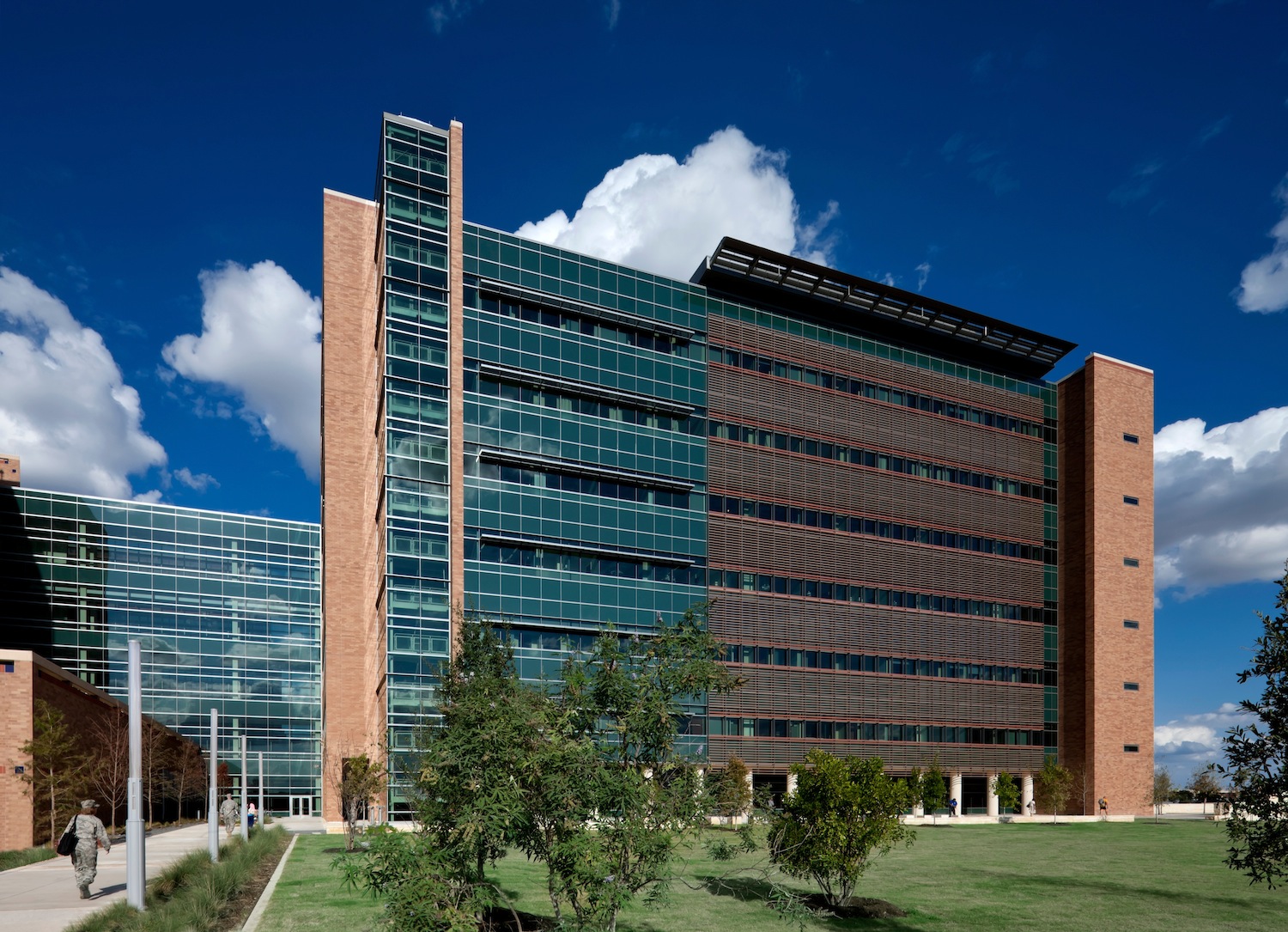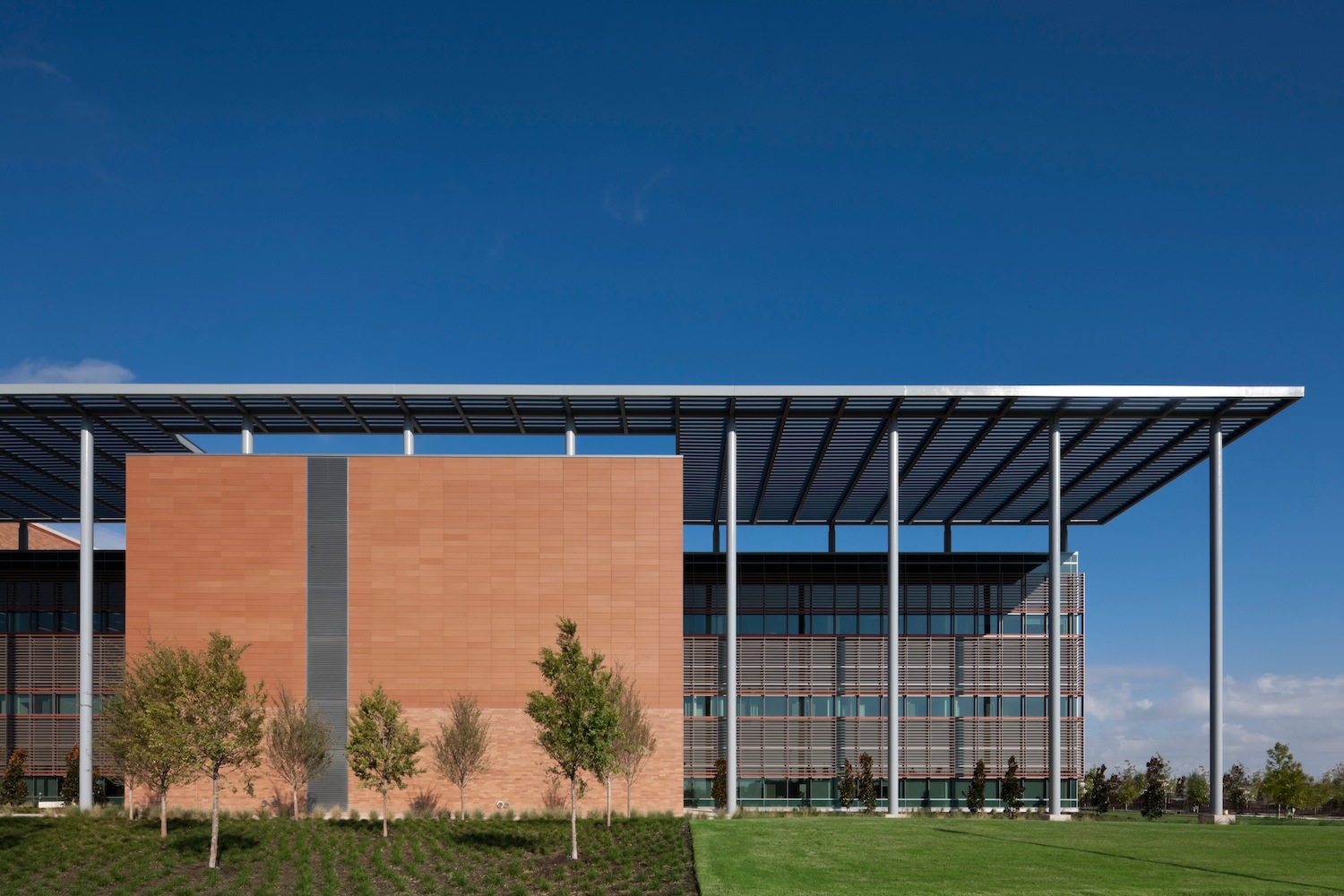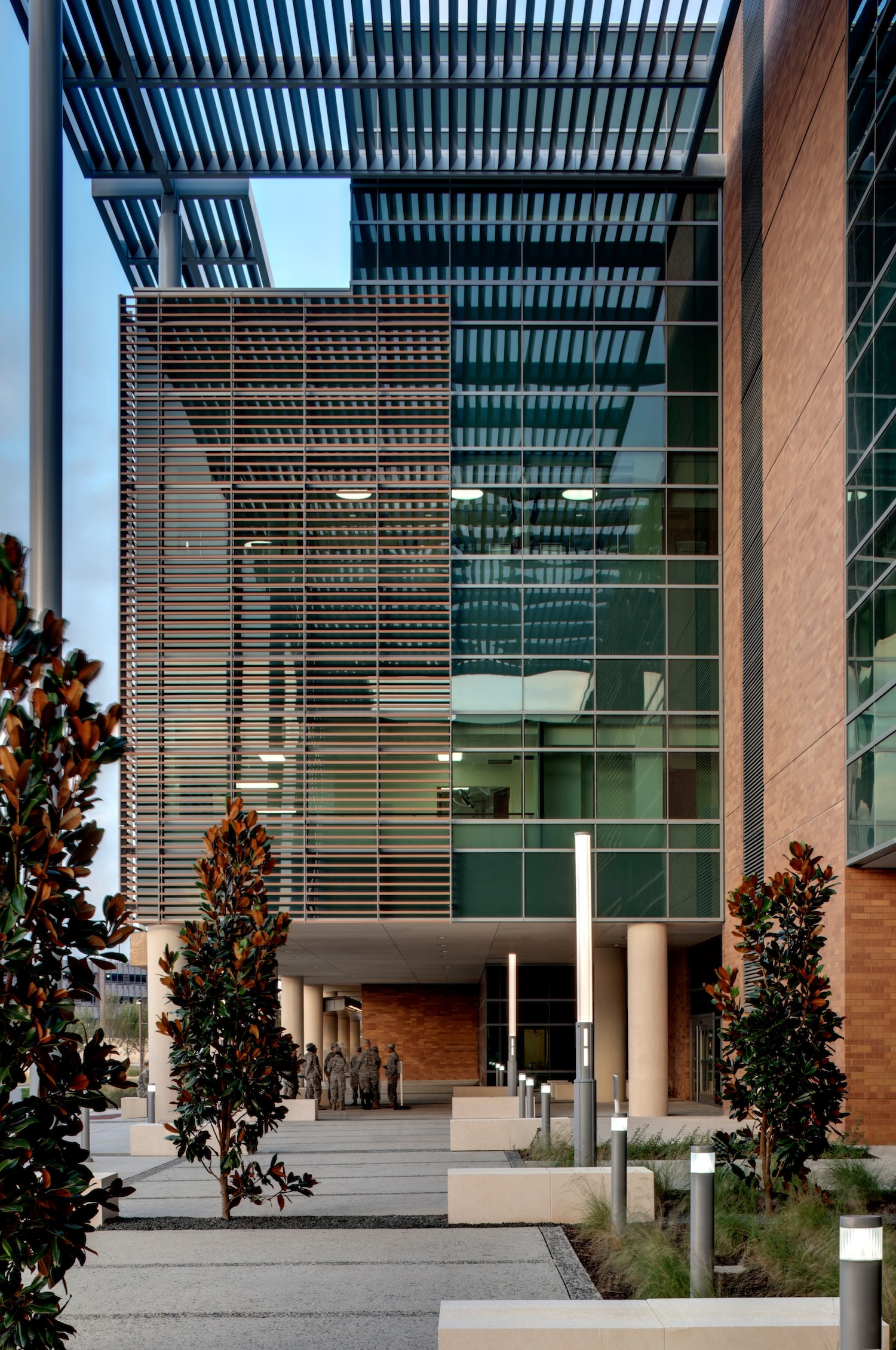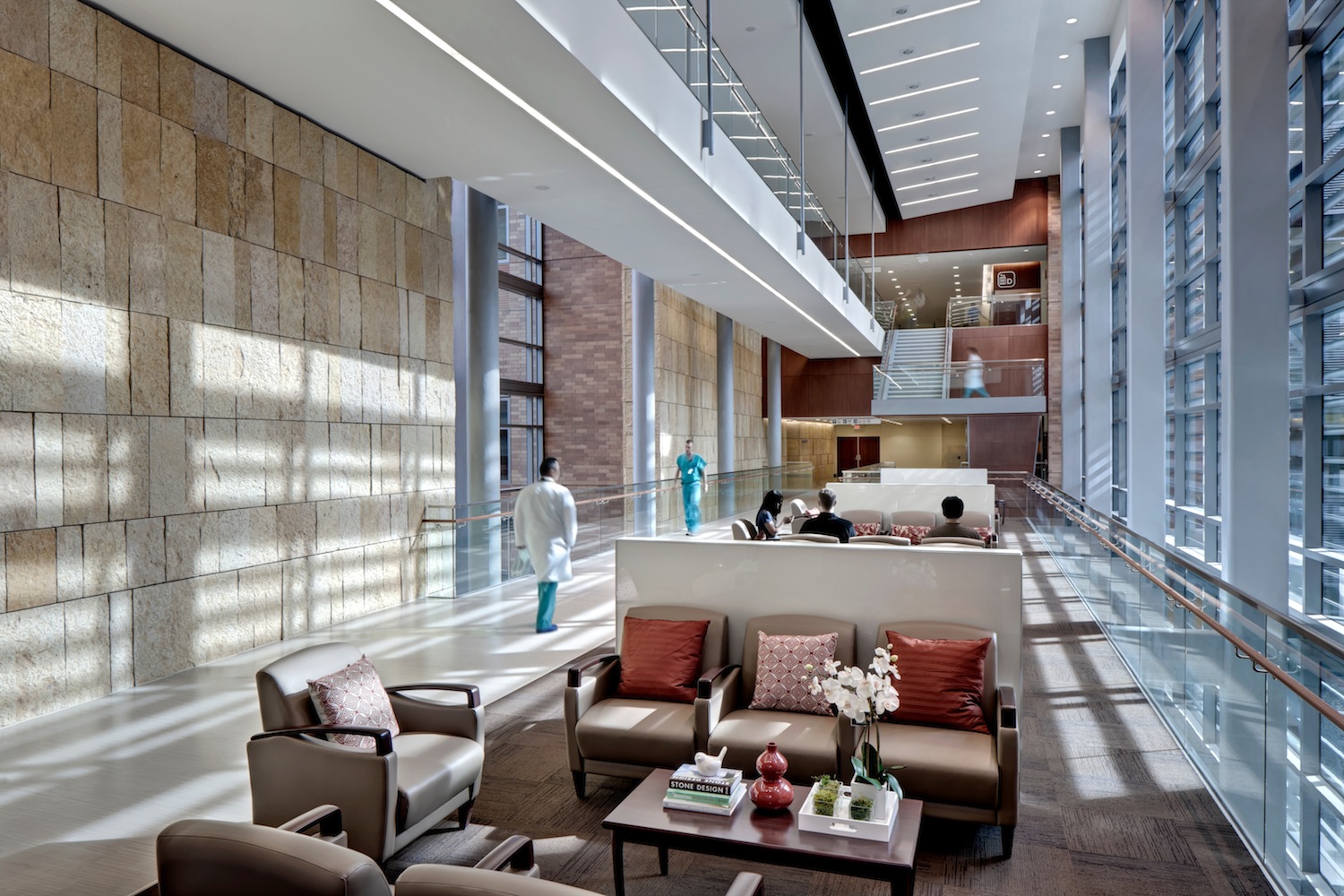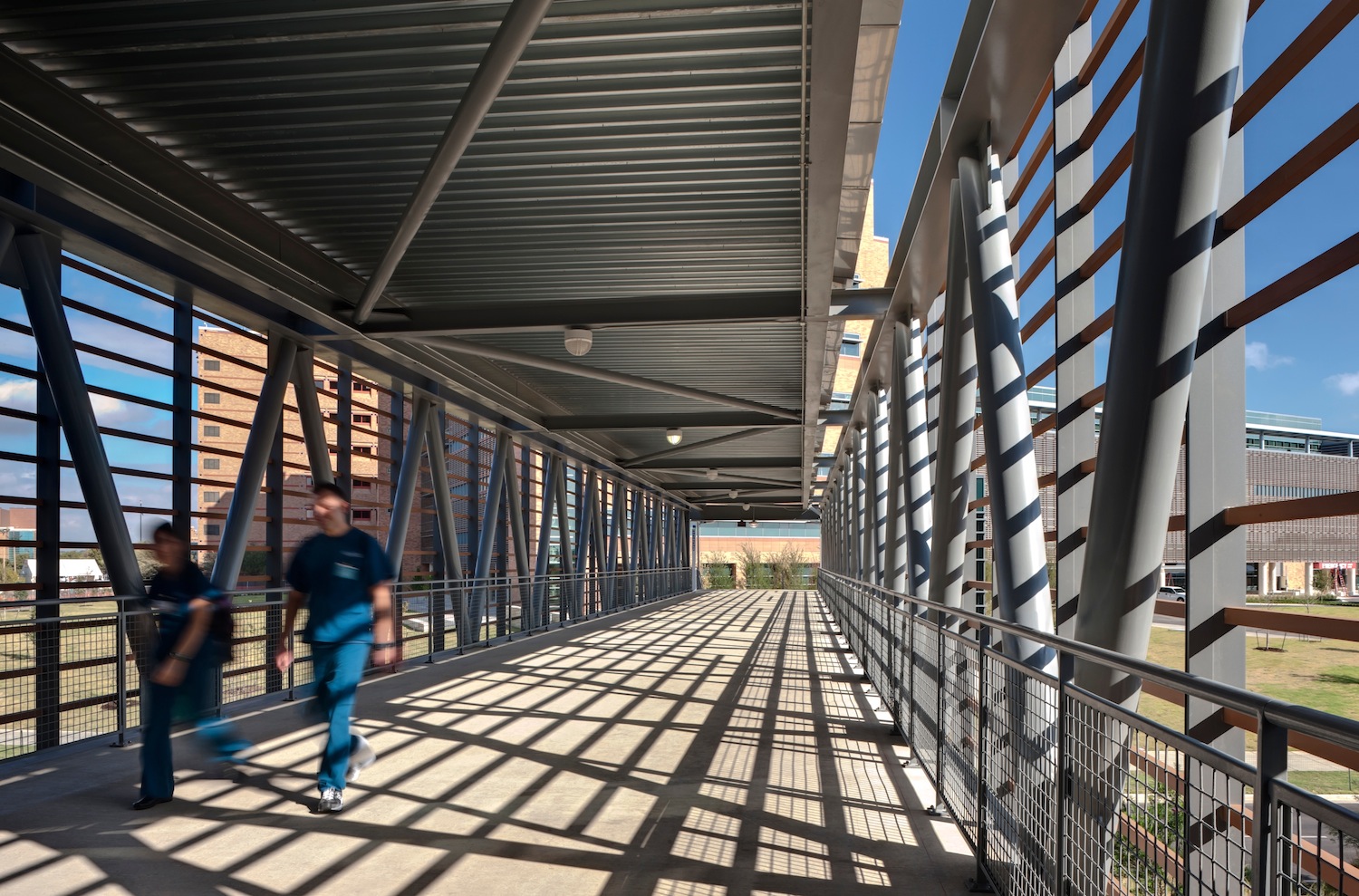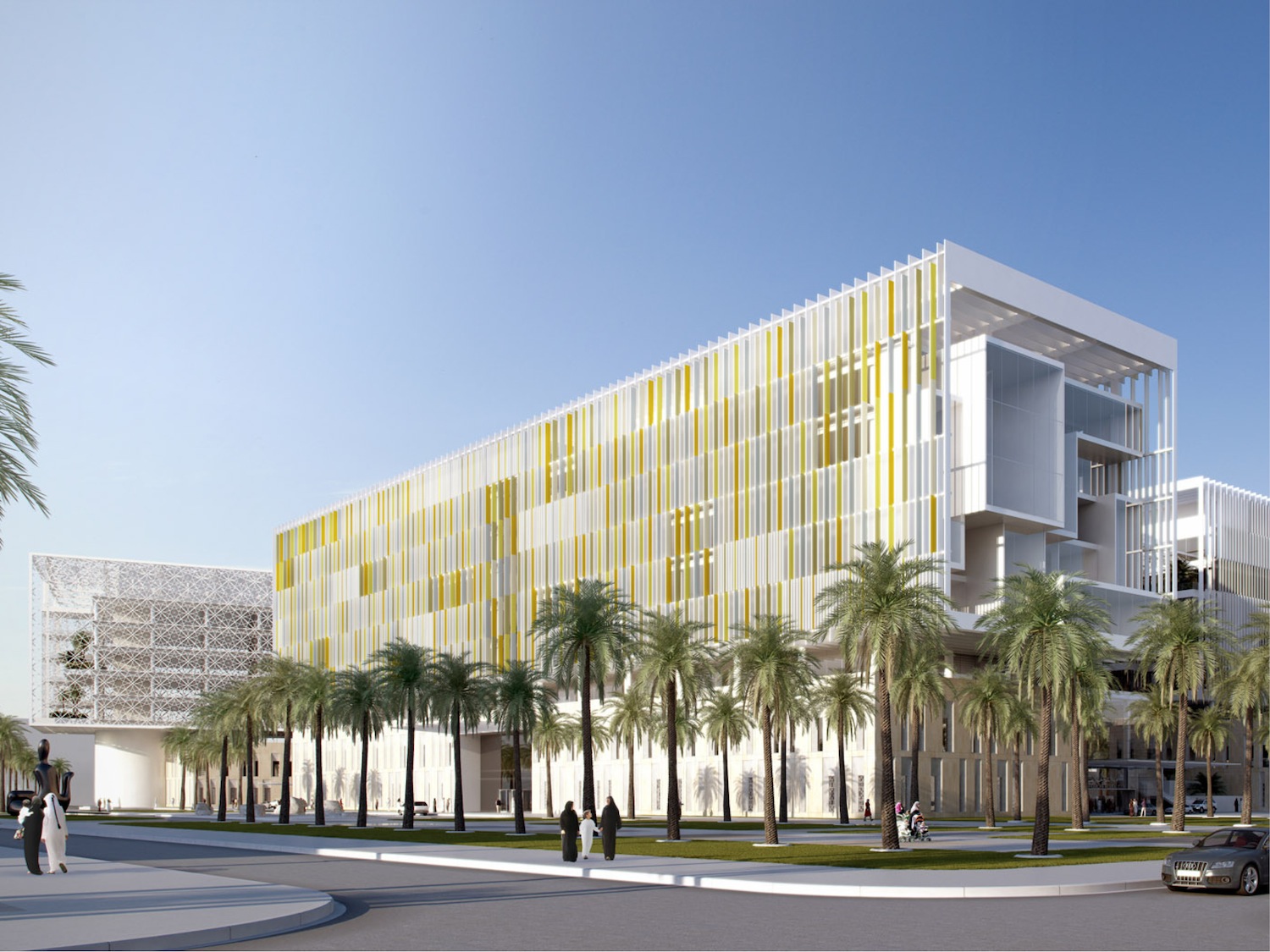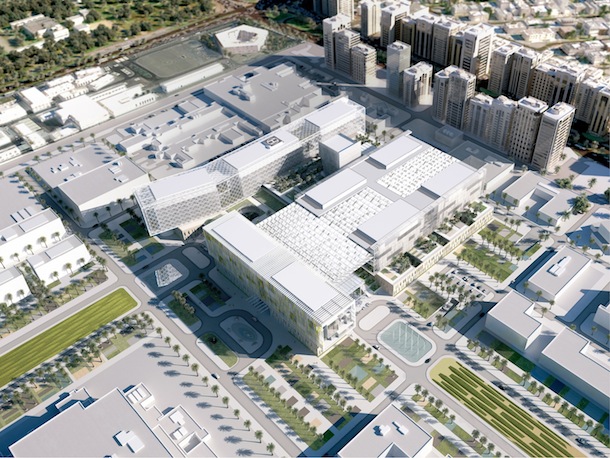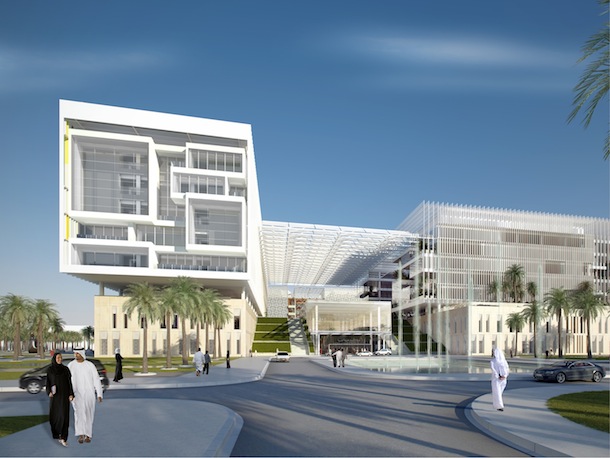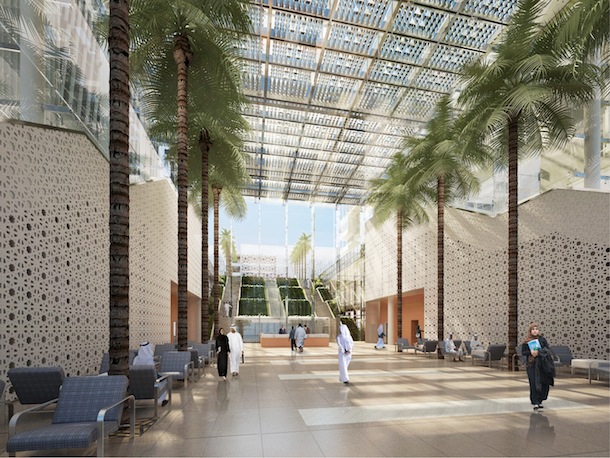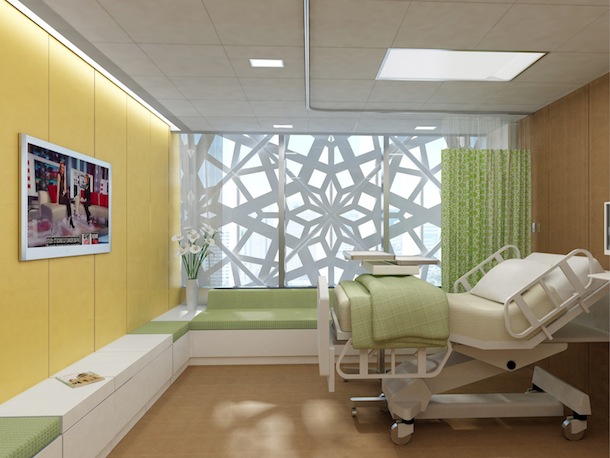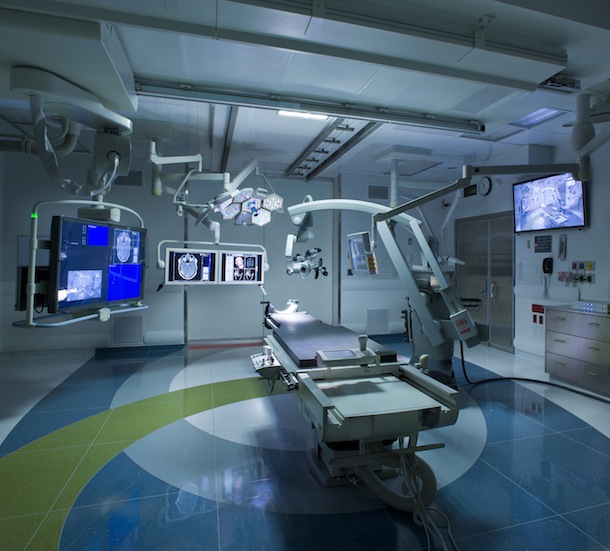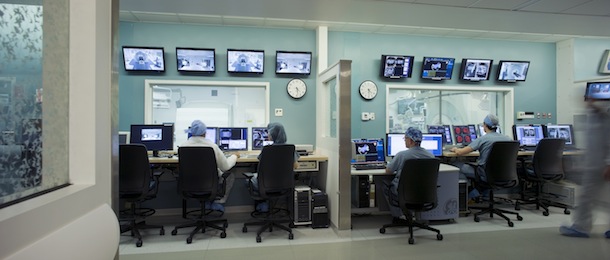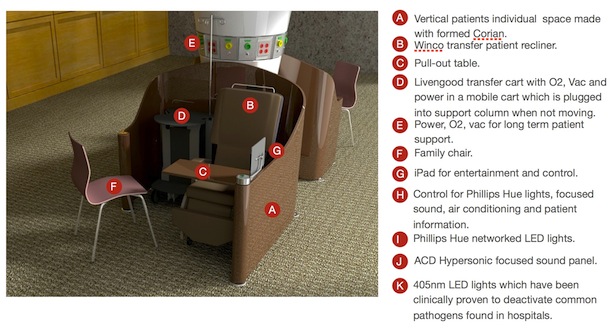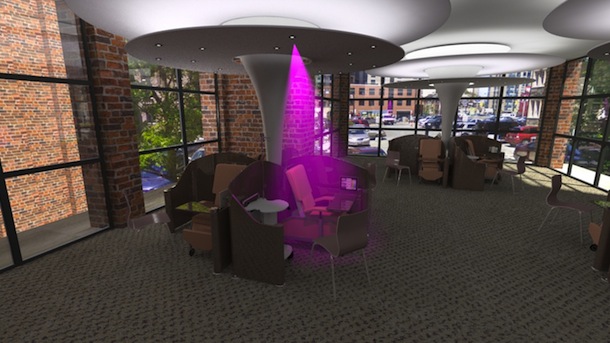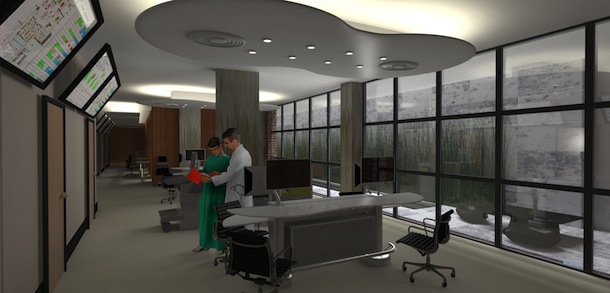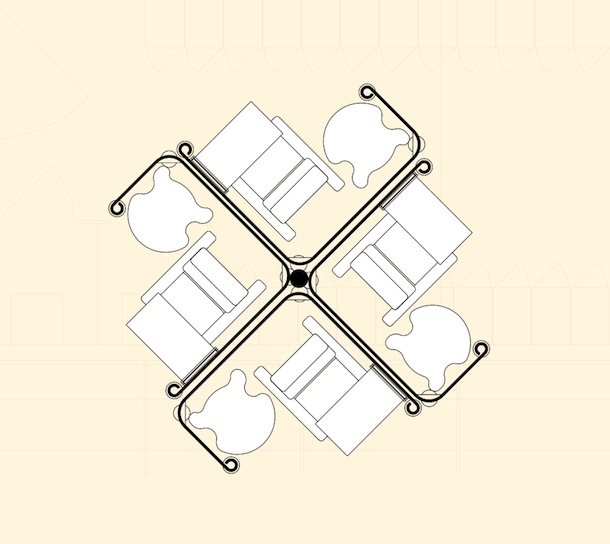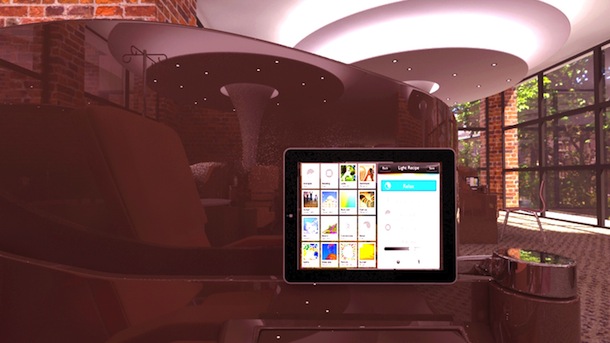7. San Antonio Military Medical Center an addition to the Brooke Army Medical Center; Fort Sam Houston, Texas
RTKL Associates, Inc.
The San Antonio Military Medical Center (SAMMC) is the largest inpatient medical center for the U.S. Department of Defense and the agency’s only American Burn Associated-verified burn center. The building, which opened in 2011, adds 102 beds, a rehabilitation clinic, expanded operating room capabilities, a new emergency department and a new patient bed tower. It also includes a parking structure for 5,000 vehicles, and ancillary support and infrastructure. RTKL was commissioned to design the new 760,000 -square-foot, LEED Silver certified building after working on a number of other projects for the U.S. Army Corps of Engineers in support of their 2005 Base Realignment and Closure (BRAC) initiative. Photos: Charles Davis Smith courtesy RTKL
Category C: Unbuilt
8. Sheikh Khalifa Medical City; Abu Dhabi, UAE
Skidmore, Owings & Merrill in a joint venture with ICME & Tilke as ITS
Sheikh Khalifa Medical City (SKMC) is an 838-bed medical complex in the heart of Abu Dhabi. Designed by Skidmore, Owings & Merrill LLP (SOM) in a joint venture with ICME and Tilke, SKMC contains three hospitals under one roof, combining a General Hospital, tertiary Women’s Hospital, and Pediatric Hospital. This model enhances patient care through specialization while improving efficiency through shared services. Envisioned as a city within a city, the design creates a bustling campus-like environment of distinct character and is based on the notion of patients as guests. The project’s lobbies and public spaces convey a sense of serenity through spaciousness, natural materials and diffused natural light. Renderings: SOM
Category D: Innovations in Planning and Design Research, Built and Unbuilt
9. Brigham and Women's Hospital, Advanced Multimodality Image Guided Operating Room (AMIGO); Boston
Payette
In the groundbreaking clinical research facility, Brigham and Women’s Hospital’s AMIGO Suite, an operating room is linked to adjacent imaging suites, enabling the patient to remain static while the machines—including a 33,000-pound MRI—move from one chamber to another in the midst of a surgical procedure. The array of infrastructure necessary to enable this technology was deftly concealed behind walls and above ceilings, which were kept neutral in appearance so as not to compete with critical patient information displays. The kinetic qualities of the suite are captured on the floor, where the arc of the operating table’s rotation and the limits of the magnet’s Gaussian surfaces are vividly rendered in a palette of colors derived from the facility’s cutting-edge equipment. Photos: Warren Jagger Photography
10. Rethinking the need for emergency department beds
Lennon Associates
The project was to reduce the number of beds, staff and patient waiting times in a major teaching hospital emergency department while at the same time, increase patient safety and comfort. This study concluded that 60% of emergency department patients did not need to be in a bed, but could be seen in a less intense setting. Building less beds, needs less staff and requires a new physical layout to accommodate the new patient flow. That gave rise to new possibilities of enhanced patient spaces with amenities resembling that of airline first class accommodations. Computer simulations were liberally used to establish the size and staffing required for the new patient flow model. That was further buttressed by physical trials using actual patients. Renderings: Lennon Associates
11. Kaleida Health, Gates Vascular Institute and UB Clinical Translational Research Center; Buffalo, New York
Cannon Design
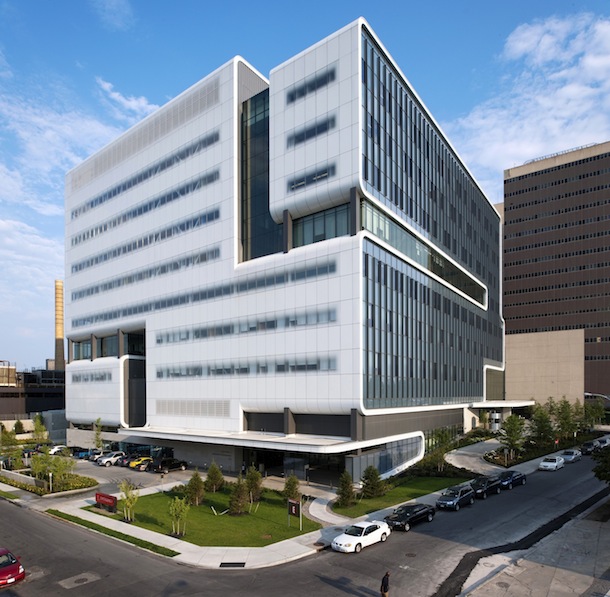
Photo: Thomas Mayer Photography
The spirit of collaboration was the driving force uniting Kaleida Health and the University at Buffalo within a single structure, and the building strives to bring several disciplines and its patients, surgeons and researchers, together to exchange knowledge and ignite innovation. The 476,000-square-foot facility achieves this by stacking a translational research building over a clinical vascular institute. The first four floors of this 10-story “vertical campus,” house the Gates Vascular Institute, with the Clinical Translational Research Center occupying the top half of the building. Sandwiched between the two, is a two-level “collaborative core”—the binder that connects doctors and researchers from varying specialties to meet in a variety of dynamic situations to accelerate medical discoveries—moving science from the bench to the bedside.
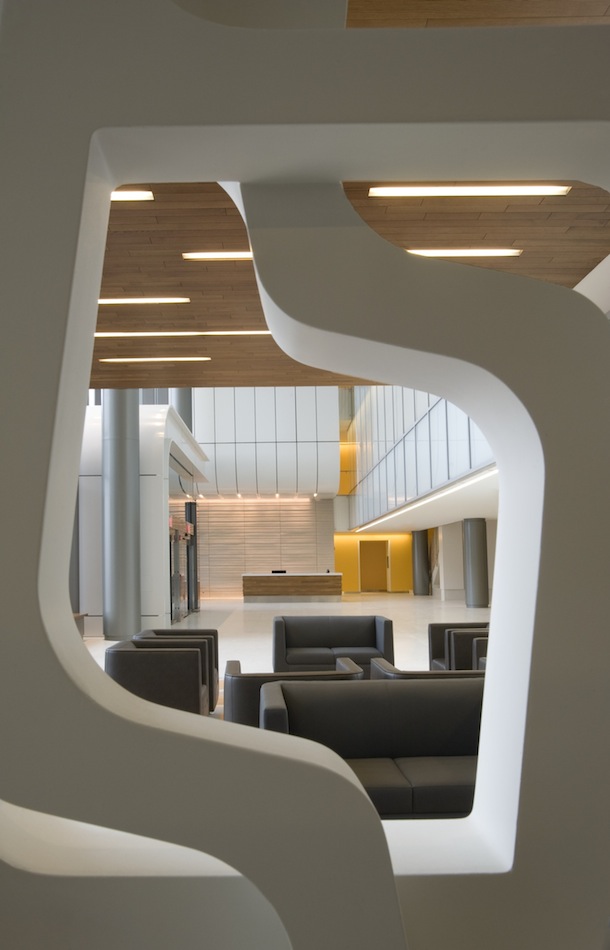
Photo: Bjorg Magnea Architectural & Interior Photography
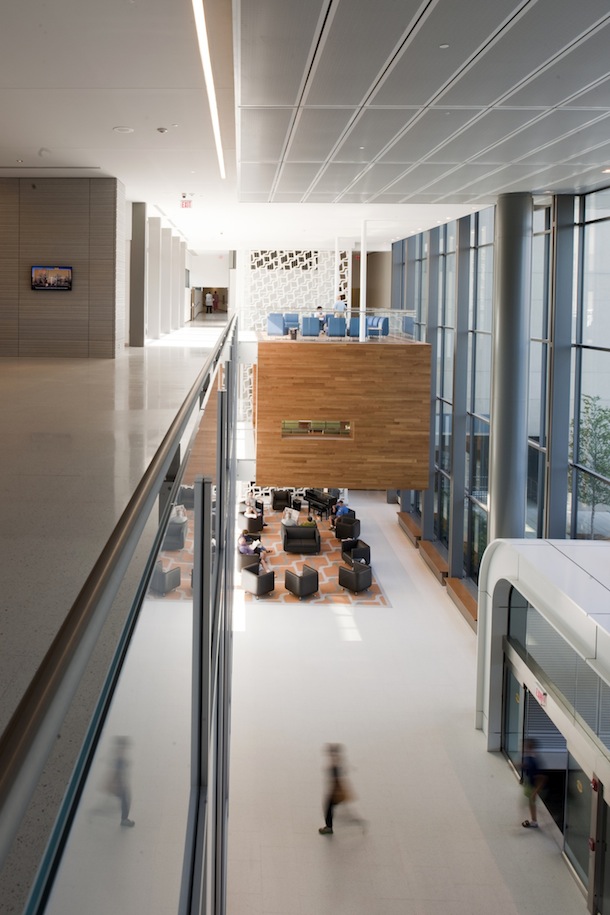
Photo: Thomas Mayer Photography
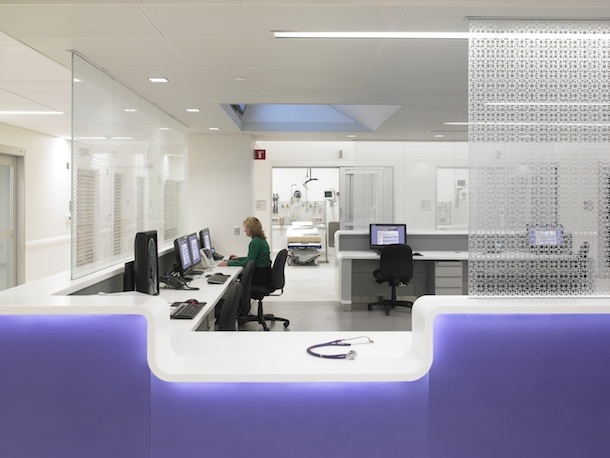
Photo: Tim Wilkes Photography
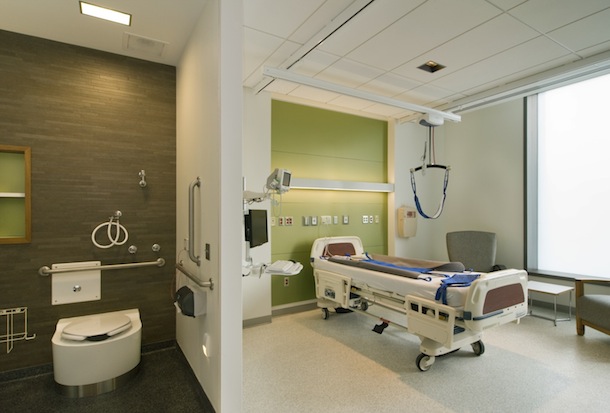
Photo: Bjorg Magnea Architectural & Interior Photography
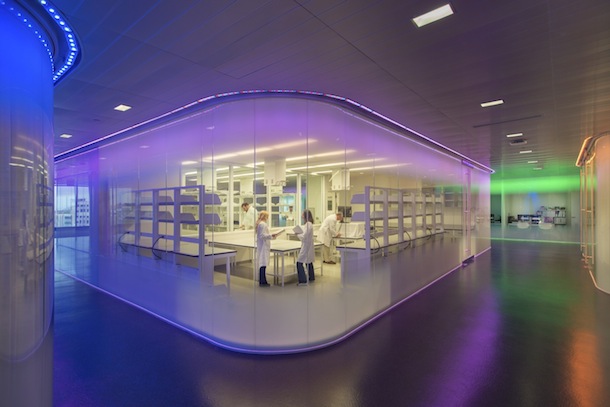
Photo: Tim Wilkes Photography
Category E: Master Planning Urban Design for Healthcare Settings
12. Focal Point Community Campus; Chicago
HDR Architecture, Inc.
Located in Southwest Chicago, it is one of the most vibrant, yet blighted, neighborhoods in the city. Acting as both an anchor and a change agent, the hospital is envisioned as an urban campus that fosters a relationship between the hospital and its community. The two are intrinsically linked by a “circulatory system” – a band of food and retail markets, fitness centers, etc. that runs along the third floor of the building. This system serves as the interface between the world of healthcare and the world beyond, and it literally brings the two together – a new paradigm in the industry. Furthermore, the building treads lightly on the site. Its ground floor is wrapped with glass and its grounds are replete with wellness gardens, soccer fields, and basketball courts. Renderings: HDR Architecture
For more, see the AIA press release.
Related Stories
| Aug 11, 2010
Construction unemployment rises to 17.1% as another 64,000 construction workers are laid off in September
The national unemployment rate for the construction industry rose to 17.1 percent as another 64,000 construction workers lost their jobs in September, according to an analysis of new employment data released today. With 80 percent of layoffs occurring in nonresidential construction, Ken Simonson, chief economist for the Associated General Contractors of America, said the decline in nonresidential construction has eclipsed housing’s problems.
| Aug 11, 2010
Billings at U.S. architecture firms exceeds $40 billion annually
In the three-year period leading up to the current recession, gross billings at U.S. architecture firms increased nearly $16 billion from 2005 and totaled $44.3 billion in 2008. This equates to 54 percent growth over the three-year period with annual growth of about 16 percent. These findings are from the American Institute of Architects (AIA) Business of Architecture: AIA Survey Report on Firm Characteristics.
| Aug 11, 2010
CHPS debuts high-performance building products database
The Collaborative for High Performance Schools (CHPS) made a new tool available to product manufacturers to help customers identify building products that contribute to sustainable, healthy, built environments. The tool is an online, searchable database where manufacturers can list products that have met certain environmental or health standards ranging from recycled content to materials that contribute to improved indoor air quality.
| Aug 11, 2010
ICC launches green construction code initiative for commercial buildings
The International Code Council has launched its International Green Construction Code (IGCC) initiative, which will aim to reduce energy usage and the carbon footprint of commercial buildings.Entitled “IGCC: Safe and Sustainable By the Book,” the initiative is committed to develop a model code focused on new and existing commercial buildings. It will focus on building design and performance.
| Aug 11, 2010
Green Building Initiative launches two certification programs for green building professionals
The Green Building Initiative® (GBI), one of the nation’s leading green building organizations and exclusive provider of the Green Globes green building certification in the United States, today announced the availability of two new personnel certification programs for green building practitioners: Green Globes Professional (GGP) and Green Globes Assessor (GGA).
| Aug 11, 2010
Potomac Valley Brick launches brick design competition with $10,000 grand prize
Potomac Valley Brick presents Brick-stainable: Re-Thinking Brick a design competition seeking integrative solutions for a building using clay masonry units (brick) as a primary material.
| Aug 11, 2010
Outdated office tower becomes Nashville’s newest boutique hotel
A 1960s office tower in Nashville, Tenn., has been converted into a 248-room, four-star boutique hotel. Designed by Earl Swensson Associates, with PowerStrip Studio as interior designer, the newly converted Hutton Hotel features 54 suites, two penthouse apartments, 13,600 sf of meeting space, and seven “cardio” rooms.
| Aug 11, 2010
HDR, Perkins+Will top BD+C's ranking of the nation's 100 largest healthcare design firms
A ranking of the Top 100 Healthcare Design Firms based on Building Design+Construction's 2009 Giants 300 survey. For more Giants 300 rankings, visit http://www.BDCnetwork.com/Giants


